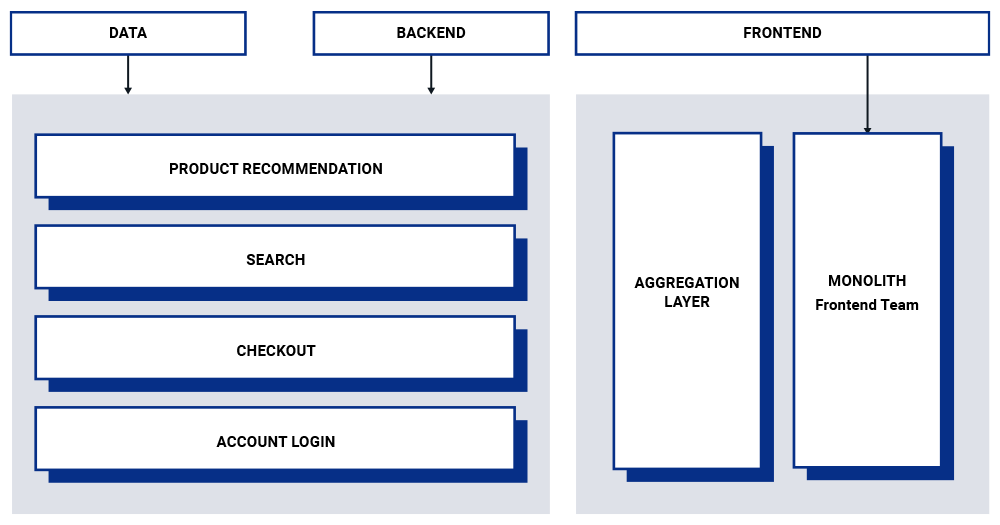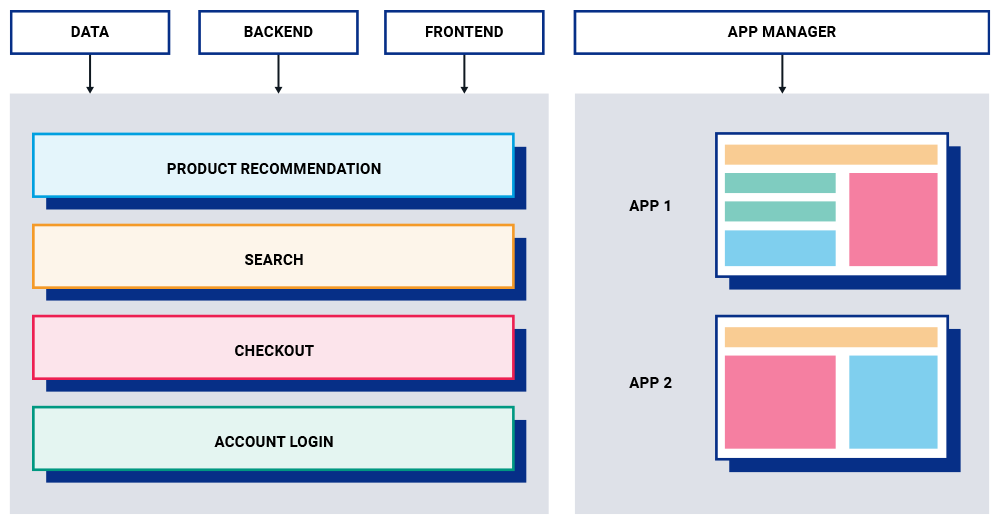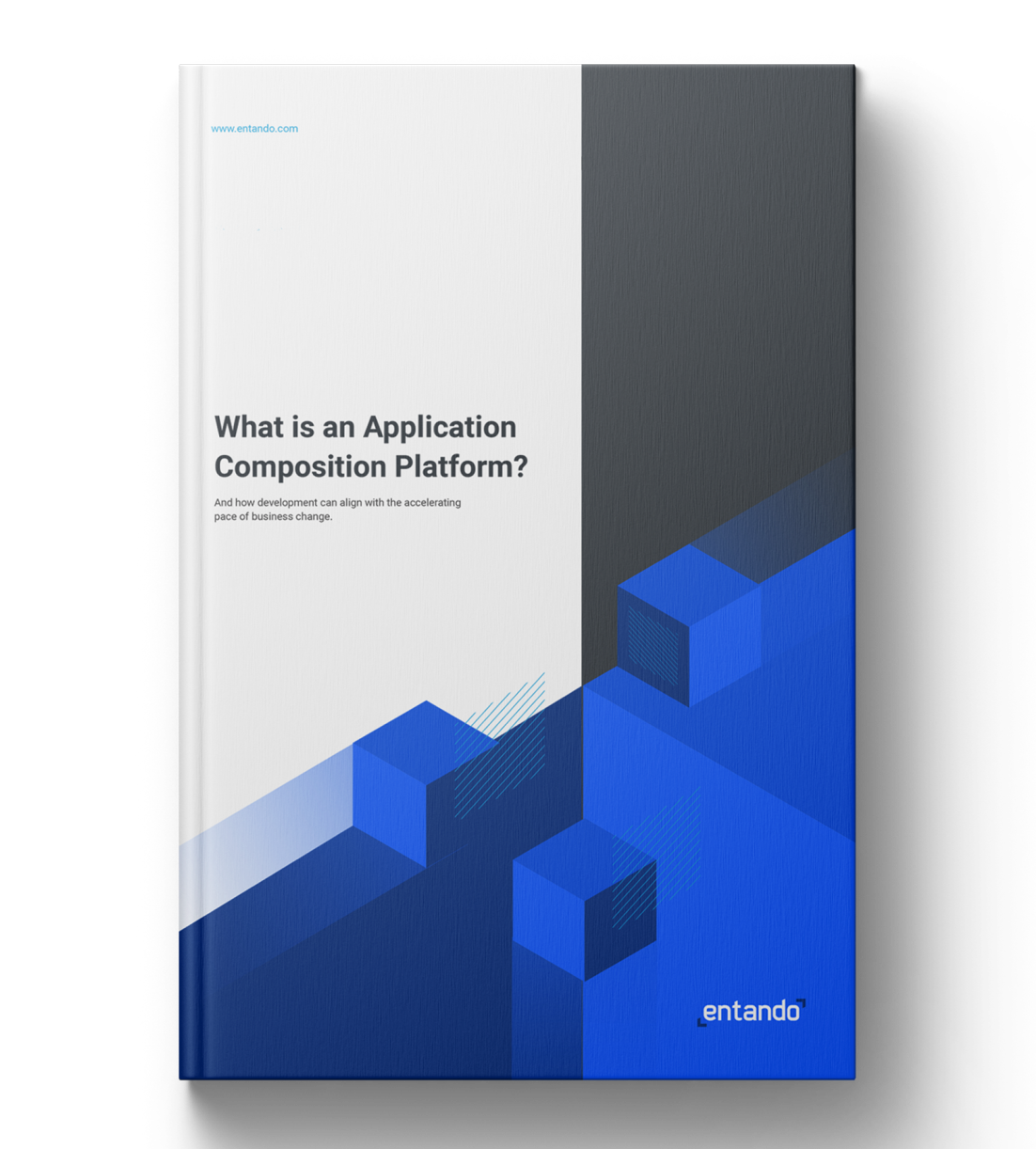Microservices have changed the way many organizations develop applications, providing greater autonomy to various teams to create individual components of the larger application. Furthermore, they have transformed the way many businesses think about organizing their development teams.
However, atop this microservice architecture has been the frontend layer that has historically been developed by its own particular team as a single page app. This layer has come to be known as the frontend monolith, and such a monolith often becomes unwieldy and difficult to manage, creating bottlenecks and slowing the rate at which an organization can innovate new features.
Into this context, micro frontends have emerged as a new way of developing the frontend.
What Micro Frontends Are
A micro frontend architecture models itself after microservices, which break up larger monolithic structures in favor of more loosely coupled services that developers and teams of developers can work on and update independently from the rest of the site, app, or portal.
Before the advent of microservices, developers would create applications as backend and frontend monoliths. This works great for simpler applications, but as the size of codebases and the demand for more complex functionality increases, the backend monolith becomes too cumbersome for many applications. This is the problem that microservices were introduced to solve.

With microservices, independent teams are able to work on backend functionality in isolation from different parts of the site. This streamlines the development process and increases the speed with which teams could develop and update their feature or functionality. However, in many organizations, the frontend monolith remains. So micro frontends serve as the next natural progression toward eliminating barriers to innovation with regard to modern applications.

From a business perspective, micro frontends do for the frontend what microservices do for the backend. By extending this decoupling from the backend to the frontend, technical leaders are able to structure their teams vertically around a specific business goal, rather than horizontally around a particular domain expertise. This allows a team to focus not only on acheiving a technical objective, but working holistically toward the business function.

Micro frontends bring many benefits to organizations and their development teams. Here’s who benefits most from leveraging them, and the benefits they offer.
Who Benefits Most From Using Micro Frontends
The organizations that benefit most from micro frontends are enterprises that require a certain level of complexity in their applications. For example, micro frontends are probably not a necessary tool for a personal blog or a simple website. However, micro frontends are incredibly useful for applications like large ecommerce sites, online streaming services, and banking sites, along with many others.
Here are the benefits such large scale organizations will enjoy when they begin developing in micro frontends.
1. Greater Agility For Your Teams
With micro frontends, you can assemble your teams vertically, empowering an ensemble of cross-functional team members with end-to-end control over a particular feature. This decreases any organizational drag on a project and allows decisions to be made and implemented by those who are best acquainted with the challenges at hand.
2. Technology Agnosticity
One great benefit of micro frontends is that any given team can use their favorite frontend tool to build their project, without needing to create an organization wide standard. This empowers a team to work with the tools that work best for them and the skill set of their developers, enabling them to focus less on aligning technologies and more on delivering innovative features.
3. Manageable Codebases
When you break up a large frontend monolith into smaller micro frontends, the code that any given team is working with is much smaller and more manageable. This enables a team to work more quickly, since they're not weighed down by such complexity, and it decreases the likelihood they will make avoidable errors.
4. Reusability
Micro frontends enable organizations to leverage code reuse, which benefits them in two key ways. Firstly, reusing key UI components across multiple projects helps large organizations achieve UX consistency across their applications in various channels and on various devices.
Secondly, this reuse of code decreases the amount of time and resources necessary to develop successive apps, particularly as an organization begins to build a robust repository of UI/UX components from multiple projects.
More Resources on Micro Frontends
If you're looking for more resources for how you can implement micro frontends, we have a list of curated blog posts you can view here. You can also schedule a call with our Professional Services team to see how we can help you rethink the way you build your application's frontend.
Watch The Video Summary: What Are Micro Frontends?
Build modern applications using micro frontends and deploy on Kubernetes with Entando.
When release cycles take months instead of weeks, your business is left unable to deliver modern online experiences. Development bottlenecks slow your ability to make application updates, keeping you from iterating and innovating. And outdated or clunky UX keeps you from winning customers over and retaining them.
So that’s why we created a platform to help you get your ideas to market faster.
Entando is the leading micro frontend platform for building enterprise web apps on Kubernetes. We want to change the way enterprises think about building their apps, sites, and portals in order to innovate more quickly.
With Entando, you can leverage customized blueprints to quickly create micro frontends and assemble them onto a single page. Then reuse UI/UX components across multiple projects via the Entando Component Repository, saving money and increasing development speed. Scale quickly and effectively with Entando’s custom Kubernetes operator, automating the deployment of scalable, self-healing applications.
Entando is open source with available enterprise support. Begin developing on the platform today, and get a quote to see how our Professional Services team can help your enterprise build better apps, sites, and portals--faster.
